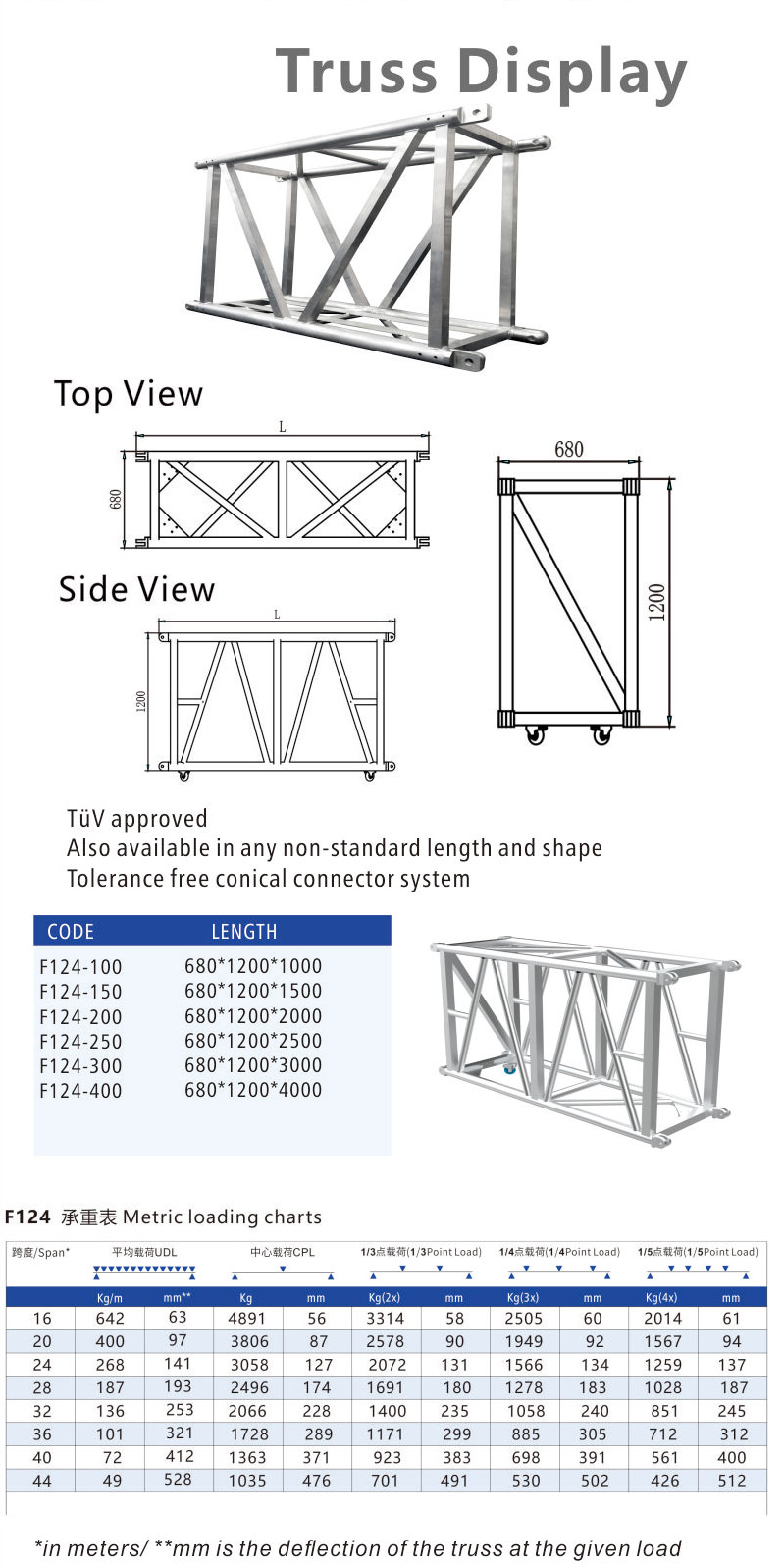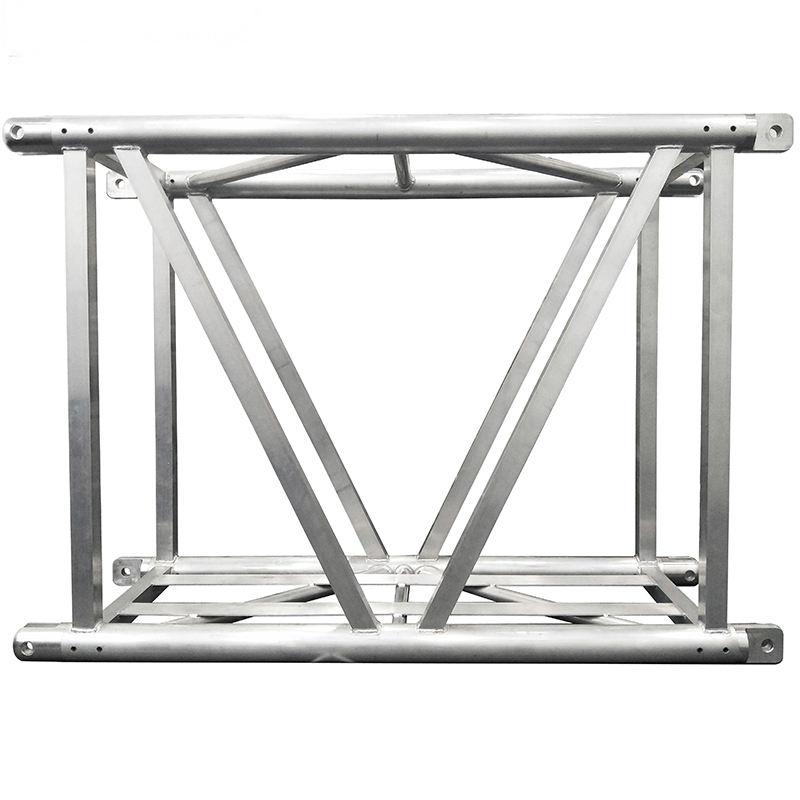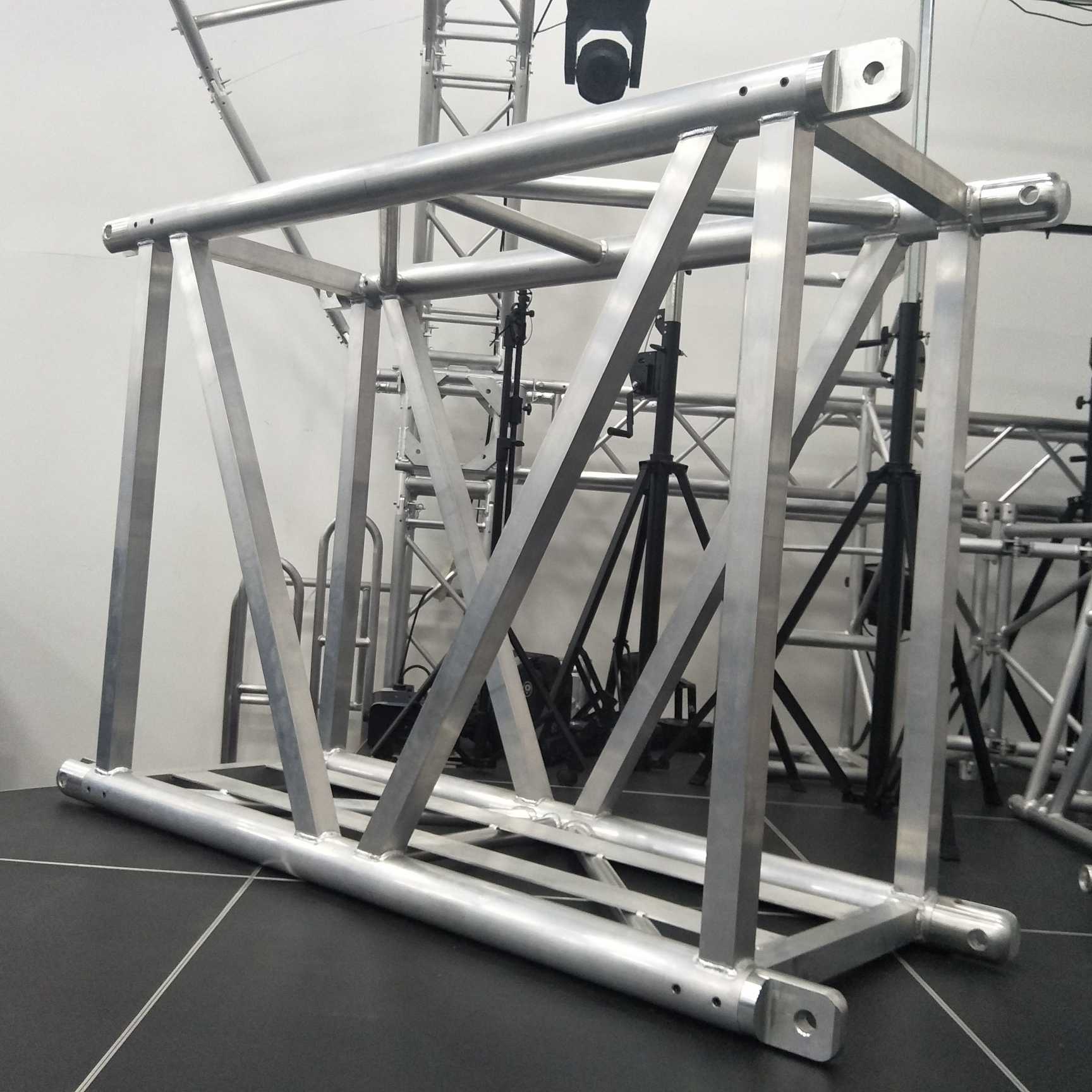What Are You Looking For?
the 680x1200mm aluminum alloy outdoor/indoor lighting stage event truss represents a significant advancement in event infrastructure. Its combination of strength, portability, adaptability, and aesthetic appeal makes it a versatile solution for a wide range of events. Its modular design allows for flexible configurations, while its lightweight aluminum construction reduces transportation and setup costs. Importantly, its inherent safety features contribute to a secure and reliable environment for both performers and attendees. The continued popularity and widespread adoption of this truss size underline its importance in the ever-evolving landscape of the events industry. As events continue to grow in scale and complexity, the 680x1200mm aluminum alloy truss will undoubtedly remain a cornerstone of professional event production.
The modern events industry relies heavily on robust and adaptable infrastructure to support lighting, sound, and visual displays. At the heart of many successful events lies the event truss, a crucial component providing structural support for a variety of applications. Among the most versatile and popular options is the 680x1200mm aluminum alloy outdoor/indoor lighting stage event truss. This essay will explore the characteristics, advantages, and applications of this specific truss size, highlighting its role in creating impactful and safe event environments.

The dimensions of the 680x1200mm truss are carefully chosen to balance strength, portability, and adaptability. The 680mm depth provides considerable load-bearing capacity, enabling the support of heavy lighting fixtures, speakers, and video screens without compromising stability. The 1200mm length offers a manageable size for transportation and assembly, while still allowing for the creation of large and complex structures. This optimal balance makes it suitable for a wide spectrum of events, ranging from small-scale corporate gatherings to large-scale concerts and festivals.
The choice of aluminum alloy as the primary material is paramount to the truss's success. Aluminum offers a compelling combination of high strength-to-weight ratio, corrosion resistance, and ease of fabrication. Compared to steel, aluminum trusses are significantly lighter, making them easier to handle and transport. This reduced weight also translates to lower transportation costs and less strain on rigging crews. The inherent corrosion resistance of aluminum is crucial for both indoor and outdoor applications, ensuring the truss remains durable and reliable even in challenging weather conditions. Furthermore, the material's malleability allows for intricate designs and configurations, enabling event organizers to create unique and visually stunning stage setups.

The modular nature of the 680x1200mm truss system is a key factor in its widespread adoption. The individual truss sections are designed to connect securely and easily using standardized connectors, allowing for quick and efficient assembly and disassembly. This ease of setup and takedown significantly reduces labor costs and minimizes the time required for rigging. The modularity also allows for incredible flexibility in design. Trusses can be configured in a vast array of shapes and sizes, adapting to the specific requirements of each event. Whether a simple straight line, a complex curved structure, or a multi-tiered configuration is needed, the modularity of the system allows for seamless adaptation.
Beyond its structural capabilities, the 680x1200mm truss contributes significantly to the aesthetics of an event. Its clean lines and unobtrusive design allow the lighting and visual displays to take center stage, enhancing the overall visual impact of the event. The surface finish of the truss, often powder-coated for added durability and aesthetics, can be customized to match the event's branding or theme, further integrating the structure into the overall design.

The safety of the event and its attendees is paramount, and the 680x1200mm aluminum alloy truss plays a vital role in ensuring a secure environment. The truss is typically manufactured to meet rigorous industry safety standards, undergoing thorough testing to ensure its load-bearing capacity and structural integrity. Proper assembly and use by trained professionals are essential for maintaining safety, and comprehensive rigging plans are crucial for complex setups. The use of appropriate safety equipment, including fall protection and load-rated rigging hardware, is also indispensable.
